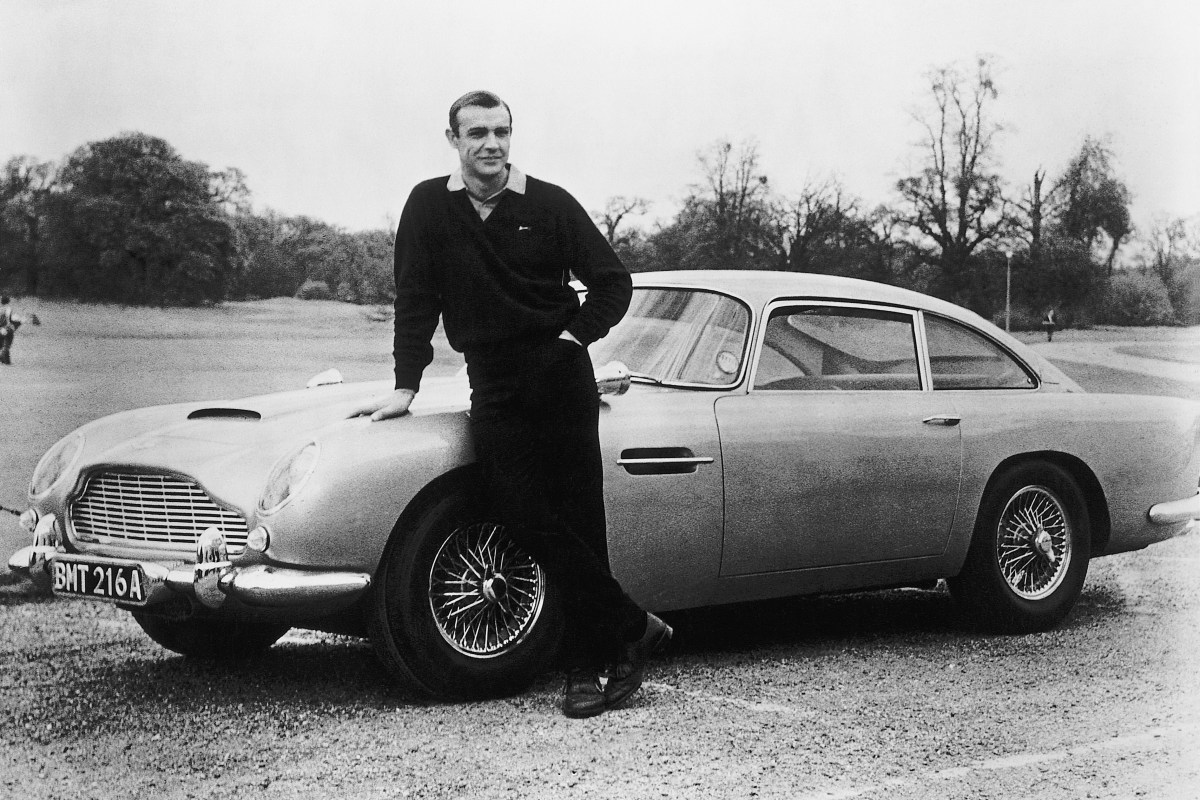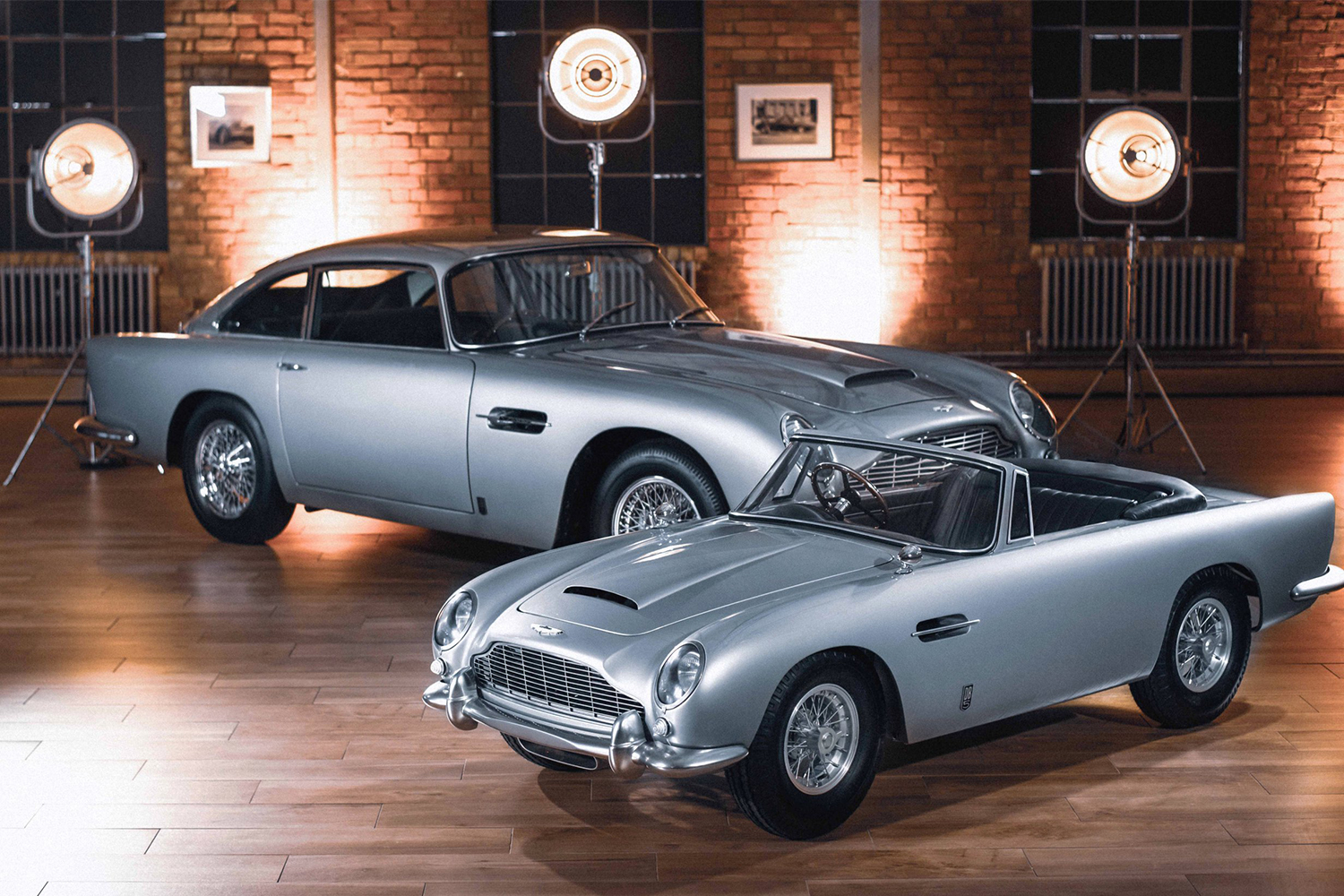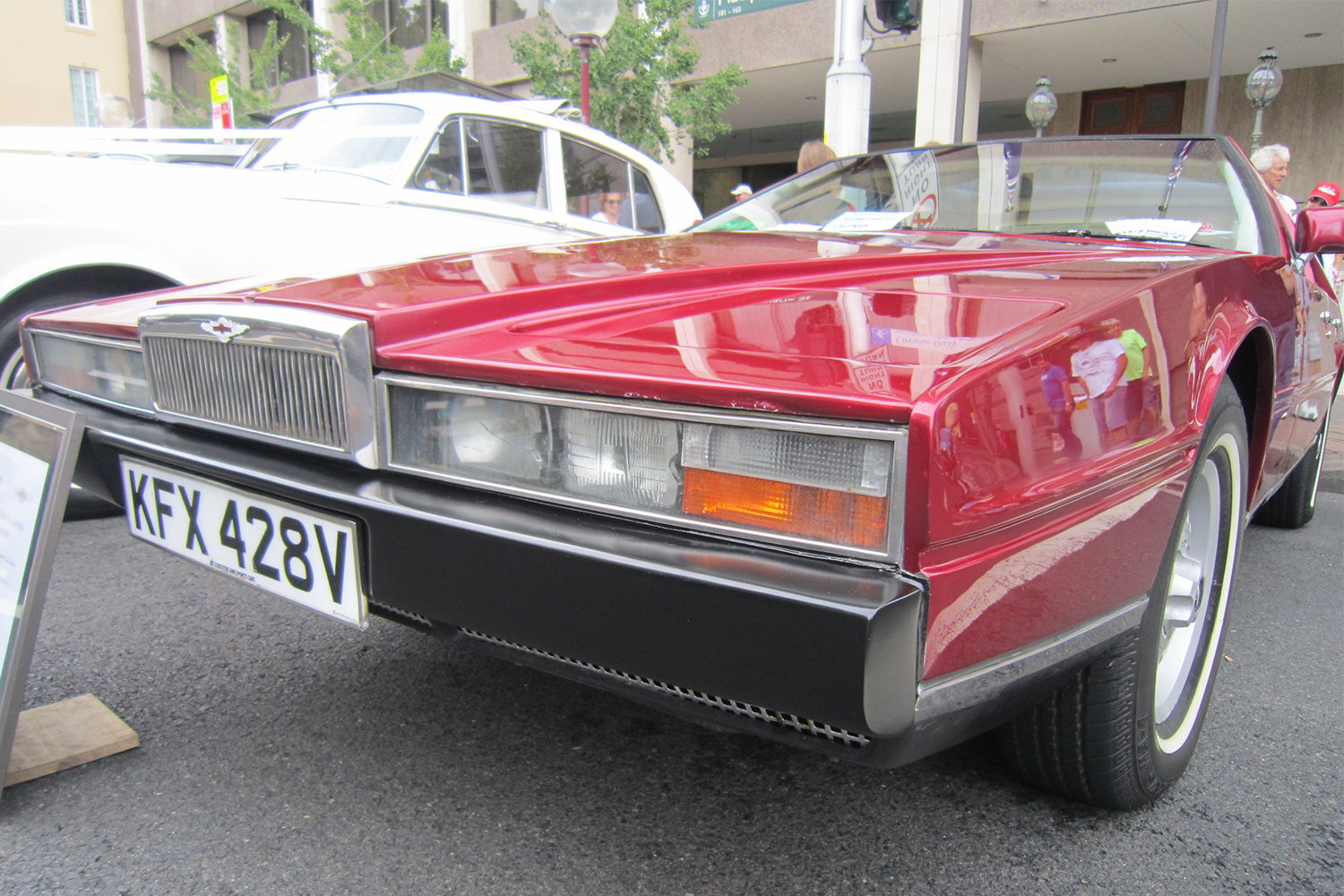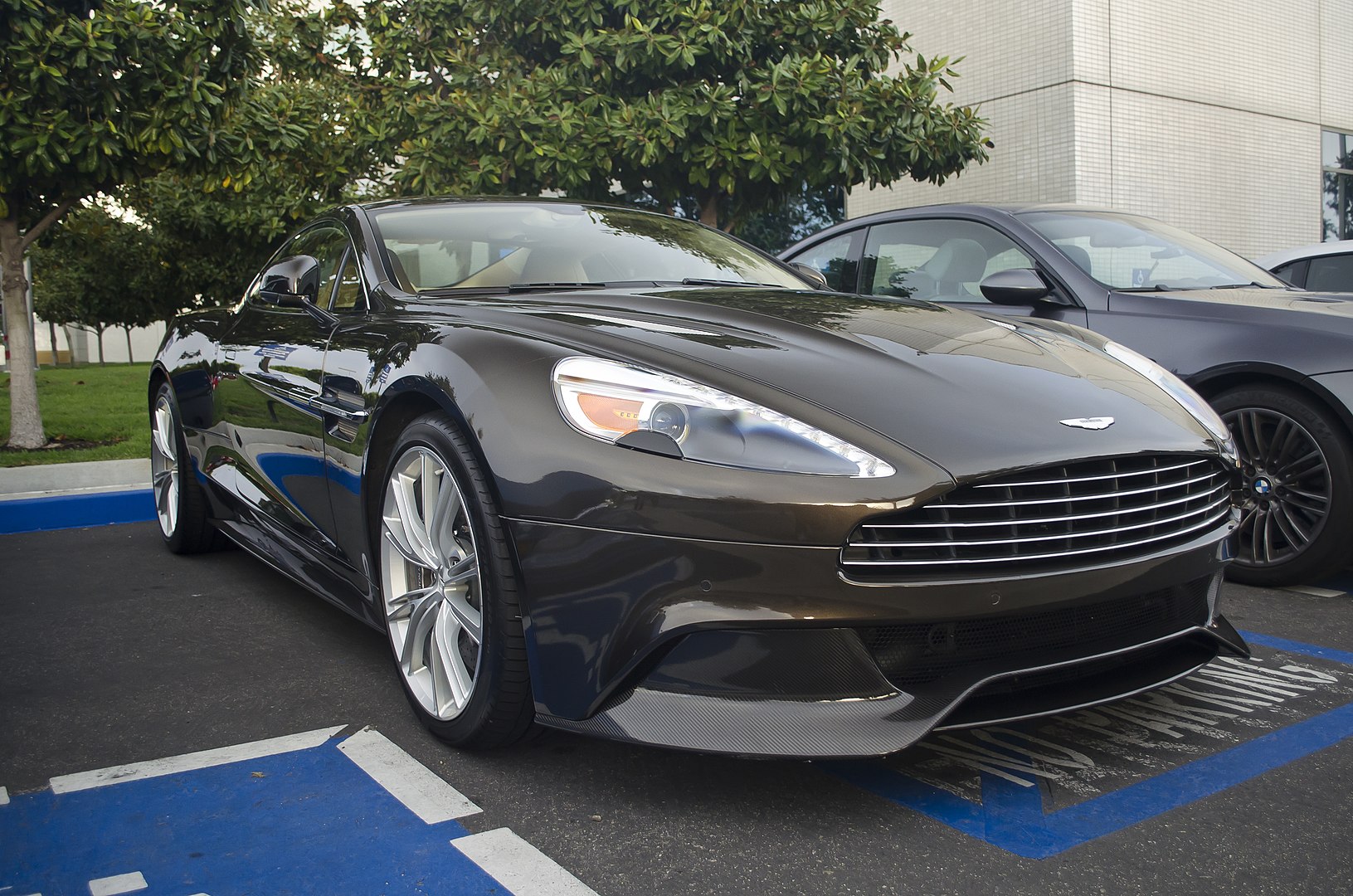“Where’s my Bentley?”
“Oh, it’s had its day, I’m afraid.”
That simple exchange between Sean Connery’s 007 and Desmond Llewelyn’s Q at the beginning of 1964’s Goldfinger would launch a partnership between two of the most enduring British brands of the 20th century. After messing about with Sunbeams and the aforementioned Bentley in the initial two James Bond films, the ‘60s super spy would make an indelible pairing with the Aston Martin DB5 kitted out for him by Q, a car whose gadget load was surpassed only by its classic beauty and fetishization by fans of the franchise.
The DB5 would go on to star in no less than seven additional Bond films, but more importantly, that single model would spark a long-lasting love affair between these two pillars of English culture. Out of the 26 total cinematic depictions of James Bond, nearly half have linked the international espionage operative to one Aston Martin or another, a list that continues to grow with next year’s (thanks to a COVID-19 pushback) No Time To Die reprising the collaboration.
Although there were hiccups along the way, the surprisingly parallel stories of both Aston Martin and Bond are intertwined, perhaps inextricably, in terms of their respective impact on both pop culture and each other.
A Star Is Born
The Aston Martin DB5’s star turn in 1964’s Goldfinger was no accident. Author Ian Fleming, who penned the original series of James Bond novels from which the films took their inspiration, had associated his globetrotting character with the automaker in the pages of the book of the same name, albeit in an earlier DB Mark III.
Seeking to update the text for a modern cinematic audience, the movie’s producers turned to the Gaydon-based manufacturer for assistance, imploring then-owner David Brown (whose initials were borrowed for the series of coupes) to loan them a DB5 for filming.
It was a heady time for the brand, which had vaulted into the spotlight on the strength of the racing performance and eye-searing styling of each of the DB cars to date. Still, nothing could prepare it for the extra attention brought about by Connery’s charisma and the worldwide phenomenon that was 007. The pair of vehicles loaned to the production — a heavily disguised DB4 that had been used as a prototype for the new model, as well as an early DB5 production car — would prove to be one of the most astute investments in the history of the company.
Sales of the DB5, which was priced at just under $100,000 in adjusted dollars, were strong, and the tiny manufacturer was able to churn out a shocking 1,000 units before moving on the next-generation DB6. The company would receive a jolt in the arm from the DB5’s cameo in Thunderball the following year, and again in 1969 with the larger DBS coupe getting brief screen time in On Her Majesty’s Secret Service.
Spurned by Moore
Once 1970s rolled around, things were dire at Aston Martin. Combined with a global energy crisis, hard times on the balance sheet in nearly every country’s economy and a world of new environmental regulations that effectively locked Aston Martin out of the United States, it was perhaps the worst moment to be an under-capitalized boutique automaker. The company fell into financial trouble and forced a sale to a group of investors led by William Willson for a mere 101 pounds sterling in 1972.
This time there would be no agent of espionage riding in on a luxury chariot to save them. As part of a strategy designed to differentiate new Bond actor Roger Moore from previous star Connery, 007’s producers elected to leave its Aston Martin legacy behind in favor of new on-screen partnerships (most notably with fellow Brits Lotus).
The lack of promotion by one of the largest cultural touchstones of the era put a hurt on Willson’s new acquisition. By 1975, after a mere three years of ownership, he parted with the company in a virtual bankruptcy. It was picked up for a million pounds by another group of U.K.-based businessmen, who would give up themselves in the face of increasingly harsh economic climes by 1981.
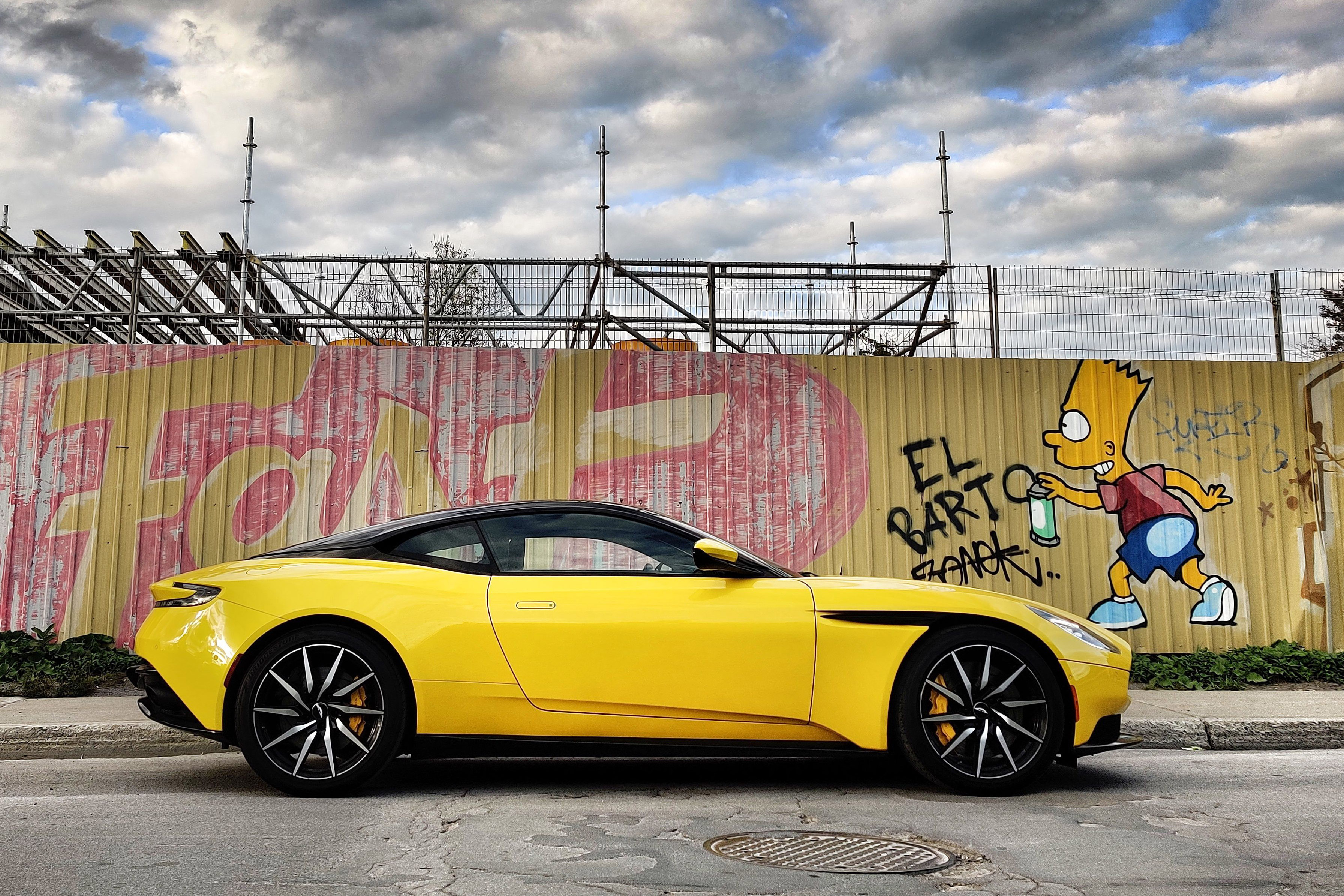
Ford Picks Up the Gauntlett
Aston Martin’s game of executive suite musical chairs would settle down somewhat over the course of the next 10 years. Although shareholders would come and go, Victor Gauntlett’s role as chairman would steer the brand to greater success — and more interesting products.
With the V8 Vantage now filling the dual role of luxury tourer and legitimate supercar contender (some versions of the car pushed past 400 horsepower, which was extraordinary engine output for the era), Gauntlett would also help steer a certain British secret agent back to his roots. With Moore out of the picture, Aston Martin would once again begin supplying vehicles to Alfred R. Broccoli’s 007, starting in 1987 with The Living Daylights, where fresh face Timothy Dalton would enjoy one of the most tricked-out Bond cars to date.
A laser-wielding V8 Vantage certainly helped raise Aston Martin’s profile and give it headlines that were less keyed in on its bottom line and more in keeping with the glamorous image it preferred to sell it customers. Gauntlett, thinking long-term, leveraged the upswell in attention to charm corporate suitor Ford, which would first take a small stake that same year, then assume majority ownership by 1991.
Spectre of the Past
Ford’s ownership would provide more than just the deepest pockets Aston Martin had ever known. It would also deliver key technical knowledge and manufacturing experience that would dramatically modernize the company’s offerings, allowing it to deliver a much broader lineup of models than ever before (including the DB7, the Vantage and the DB9) while enjoying engineering resources that had previously eluded the company.
At the same time, the brand’s relationship with the James Bond franchise would take its most unusual turn to date, and one that would come to define their shared future. Despite Broccoli and co. having signed an exclusive product placement deal with BMW (putting 007 behind the wheel of the BMW Z3 roadster, the 7 Series sedan and the Z8), the classic DB5 would return for each of the three movies covered by the agreement, serving to link the agent’s spiritual past and cold, hard, corporate present right underneath the German sponsor’s nose.
Sensing an opportunity, Ford would step in and pick up where BMW left off in 2002’s Die Another Day, which became the first James Bond movie to feature a modern, on-sale Aston Martin since the late 1980s (the V12 Vanquish). It was the beginning of a streak that would survive the automaker being sold to a private investment group in 2007, with the Pierce Brosnan films handing the torch to Daniel Craig who, like his predecessor, has driven an Aston in every Bond film he’s starred in.
Mindshare Matters
Aston Martin’s relationship with the James Bond franchise now appears to be set in stone. Over the last decade, the company has even found itself building unique vehicles at the request of directors and producers which never even found their way to the showroom (most notably the DB10 from Spectre), not to mention promoting the series when new models were completely absent from the screen (such as 2012’s Skyfall, which centered around the DB5 once more).
Unusual? Perhaps. Don’t think for a moment, however, that Aston Martin isn’t keen on maintaining what it calls its “synonymous” relationship with 007, which it attributes to keeping the brand top-of-mind with millions of movie fans who may never find themselves in an ultra-luxury showroom. It’s certainly been a success, as I lost track of how many people stopped to talk to me during my recent stint behind the wheel of the 2020 Aston Martin DB11 while dropping Bond references into the conversation — despite it never having appeared in any of the franchise entries (though a DBS Superlegerra, which is partially based on the DB11 platform, can be seen in the upcoming No Time To Die).
With a new group of owners (led by Canadian billionaire Lawrence Stroll), a fresh effort in Formula 1 (the transition of Racing Point to Aston Martin Racing) and a host of new models slated for the near future (including a family of mid-engine supercars), Aston Martin may have finally rolled back around to becoming a more equal partner in boosting Bond’s fortunes alongside its own.
This article was featured in the InsideHook newsletter. Sign up now.
